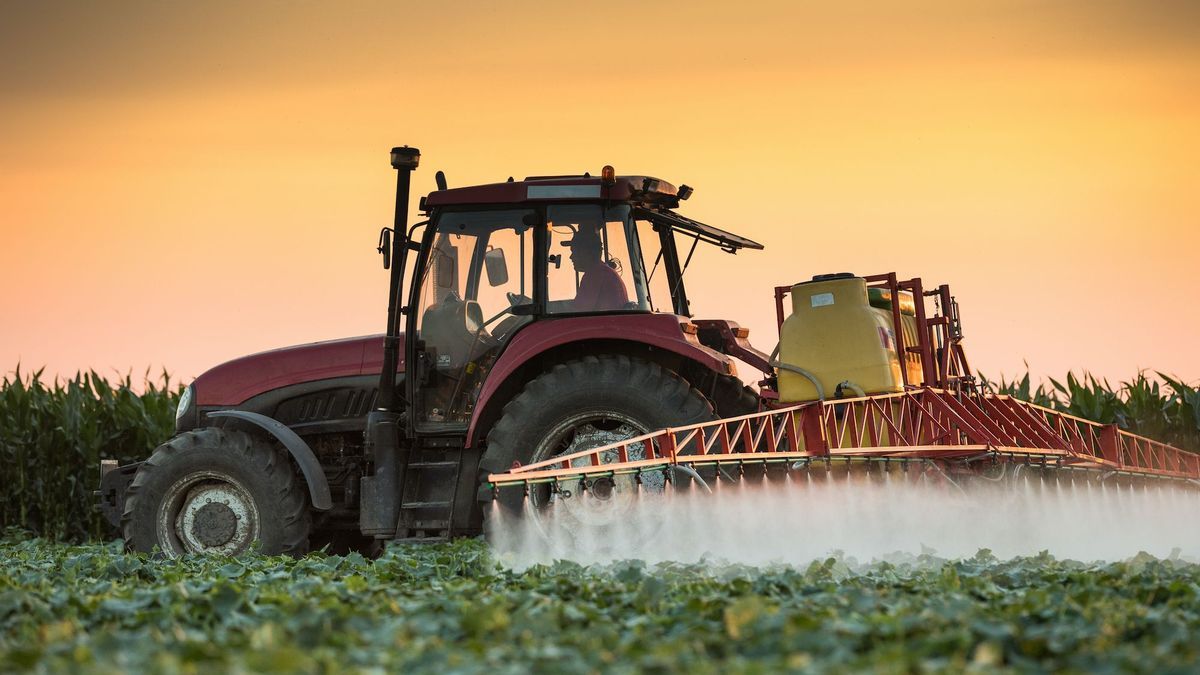
Two environmental NGOs have published a damning report concerning eternal pollutants and revealed a hitherto little-known fact: certain pesticides authorized and widely sprayed in Europe are also part of the chemical family of these PFAS. Without being regulated as such.
Thursday, November 9, the NGOs Générations Futures and Pesticide Action Network Europe announced in a joint report a hitherto ignored situation: many pesticides also belong to the chemical family of PFAS, these very persistent chemicals.
PFAS and pesticides were until now two different problems
PFAS, otherwise known as perennial pollutants, are among the chemical substances well known to the general public. “Their persistence in the environment makes them particularly problematic substances which have led the EU to propose restrictions on the use of this family of products. indicates the NGO press release. Pesticides, for their part, widely used in agriculture, are well identified as molecules dangerous for health and the environment.
But the novelty of this report is even murkier, since it reveals what many were unaware until now: certain pesticide active substances may be PFAS or that formulated pesticide products may contain PFAS-type adjuvants. Thus, around 12% of the active substances in synthetic pesticides authorized in the European Union (EU) – or 37 molecules out of 306 – belong to the PFAS family, the main known producers of which are Bayer, BASF and Syngenta, according to the report. published.
A known and camouflaged fact or recently discovered? Contacted on the subject, Nadine Lauverjat, general delegate of Future generations, tells us more: “In any case, this is a recent discovery for us. We discovered the scale of the PFAS pesticide problem by participating in the public consultation on the EU’s proposed PFAS restriction which took place between March and September this year. This discovery worried us, especially as we noticed that French agriculture was using more and more of this type of pesticide.”
Why are these PFAS pesticides problematic?
This new source of pollution is turning out to be a bigger problem than expected. According to the analysis of the authorization files for the 10 most sold PFAS active substances in Europe, the vast majority of these substances are persistent in the environment or generate the formation of persistent metabolites.
“The fact is that unlike “industrial” PFAS which are not intended to end up in the environment intentionally and which are there due to factory discharges into water for example, PFAS pesticides have “They are intended to be spread on conventional crops and therefore have a very high risk of ultimately ending up in our soil or water.” completes Nadine Lauverjat.
Insufficient European regulations
The other problem with this “double” pollution is regulatory. The EU is currently carrying out an ambitious project to restrict the use of PFAS in Europe, but PFAS pesticides have been excluded from the scope of this restriction (and PFAS pesticides also at the same time). The main argument put forward is that these substances are already managed by the Pesticides Regulations.
“But what our report shows is that this is not the case, or at least not sufficiently to prohibit the sale and therefore the use. The fact that to date 37 PFAS pesticides are authorized within the EU including 30 in Europe and that their use is increasing proves that we are exposing our environment to these eternal pollutants… We ask that these substances be banned and this as quickly as possible due in particular to this very persistence problematic” underlines our interlocutor.
There is therefore an urgent need to adapt the regulatory framework. Especially since these pesticides are exploding on French soil. According to official figures collected by the two organizations, the quantities of these “PFAS pesticides” sold in Europe have seen a “spectacular” increase over the past decade. They increased from 700 tonnes in 2008 to more than 2,300 tonnes in 2021.
